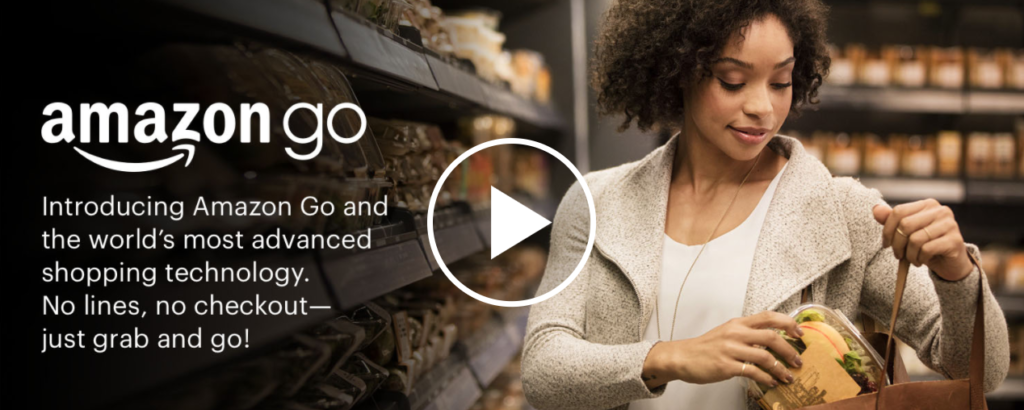Earlier this week, Amazon announced a major innovation to the retail industry: Amazon Go. The premise is simple: eliminate checkout lines and shop with ease. Can you imagine never having to wait in line at a grocery store again? Amazon can, but they’re not the first to think of a line-free retail world. In the early 2000s, IBM introduced the idea of tagging everything in retail stores with Radio-Frequency Identification (RFID)s. IBM took this inspiration from Mobil’s Speed Pass. Mobil planned to use an RFID key fob that would allow drivers to waive the keys at the gas pump to checkout instead of having to pull out wallets and swipe cards. It was popular but never gained mass acceptance, even for Mobil customers. IBM planned to develop sensors that would be able to recognize what items shoppers picked up, how much they cost, and associate the items in cart to the shopper in order to reduce checkout congestion. Due to the high costs associated with RFID tags, the idea never really took off. But now more than ever, we live in an era where people want things yesterday. Enter: Amazon Go.
How Amazon Go Works
Amazon Go starts with a smartphone app. When entering an Amazon store, shoppers must scan a smartphone app that will then serve as their virtual shopping cart. When shoppers pick up items, the cameras in the store will detect what is picked up, in what quantity, the associated costs per item and communicate that information back to the virtual shopping cart on the phone. Once shoppers have everything they need and are ready to leave the store, they can just walk out the door. No checkout lines – period. The app will use the shoppers’ predetermined payment method and as the shoppers approach the exit doors they will be automatically charged. Amazon will bill the shopper and send an email receipt to confirm the purchase. How’s that for frictionless shopping?
The Questions
Currently, there is only one store, open to Amazon employees to beta test this new and improved shopping experience. Amazon has patented their solution which begs the question of what this means for scalability. Will the eCommerce giant attempt to start popping up retail stores all over the country? What will be the response from other retail giants like Walmart? If this solution gains traction will the current POS providers like Ingenico and Square respond with their own solutions or would Amazon Go’s success signal their end?
Retail theft is a major concern, and happens on a pretty regular basis, even with checkout lines and security guards. 100% dependence on technology to correctly sensor images could make theft easier than ever before. This also begs the question of unintentional theft. If you pick up a banana but the app doesn’t sense it, what happens then?
In addition to revolutionizing the shopping experience, these stores could work wonders for market research. We can already track eCommerce shoppers with pixels, which we can use to send the gentle (and sometimes not so gentle) abandoned cart email reminder. But these stores will know a shopper’s location, shopping preferences, and possibly other factors like age, gender, etc. Though invasive, this might be the marketing data mother load. We can better target our consumers, offering better rewards and incentives than ever before.
The Takeaway
Amazon is certainly an innovator and a power player. Consumer trends and desires have certainly changed, and Amazon is hitting our pain points head on. In writing this article, I’m reminded of an interesting speech delivered by David Foster Wallace. In This is Water, he addresses the mundane activities we are forced to endure, and uses the example of waiting in a long line at a grocery store with a squeaky broken cart wheel, and a rumbling stomach. Wallace ultimately argues to focus on the good around you, the line will end eventually, the squeaky wheel won’t kill you, etc. But Amazon Go promises to eliminate these hassles. In a world where “I want it now” is king, Amazon Go may be pushing the envelope we’ve all been waiting to open.

